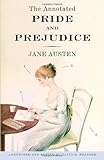 In honor of Georgette Heyer’s birthday on August 16, Laurel Ann of Austenprose is hosting a month-long celebration of Heyer’s work. Yours truly is participating with a review of Charity Girl, which will be my first Heyer read. Please join us at Laurel Ann’s for the festivities.
In honor of Georgette Heyer’s birthday on August 16, Laurel Ann of Austenprose is hosting a month-long celebration of Heyer’s work. Yours truly is participating with a review of Charity Girl, which will be my first Heyer read. Please join us at Laurel Ann’s for the festivities.
In other book-related news this week, on this date in 1054, Siward, Earl of Northumbria, invaded Scotland to aid Malcolm Canmore against Macbeth, an event depicted in Shakespeare’s Macbeth. Can’t wait to teach that one again this year! It’s also the birthday of Alexandre Dumas fils and the anniversary of the death of Gertrude Stein.
Tomorrow marks the birthday of Beatrix Potter and the anniversary of the death of Cyrano de Bergerac.
Friday is the birthday of novelist Emily Brontë. I hope I can have a review of the novel Emily’s Ghost ready to commemorate that event. Friday also marks the anniversary of the death of British poet Thomas Gray.
Saturday we celebrate the birthdays of J. K. Rowling and her creation, Harry Potter. On July 31, 1703, writer Daniel Defoe was also put in a pillory following a conviction for seditious libel. He was pelted with flowers.
On August 1, 1944, Anne Frank made the last entry in her diary. August 1 is also Herman Melville’s birthday.
Monday August 2 is Caleb Carr‘s birthday and also marks the anniversary of Raymond Carver’s death and William S. Burroughs’s death.
















